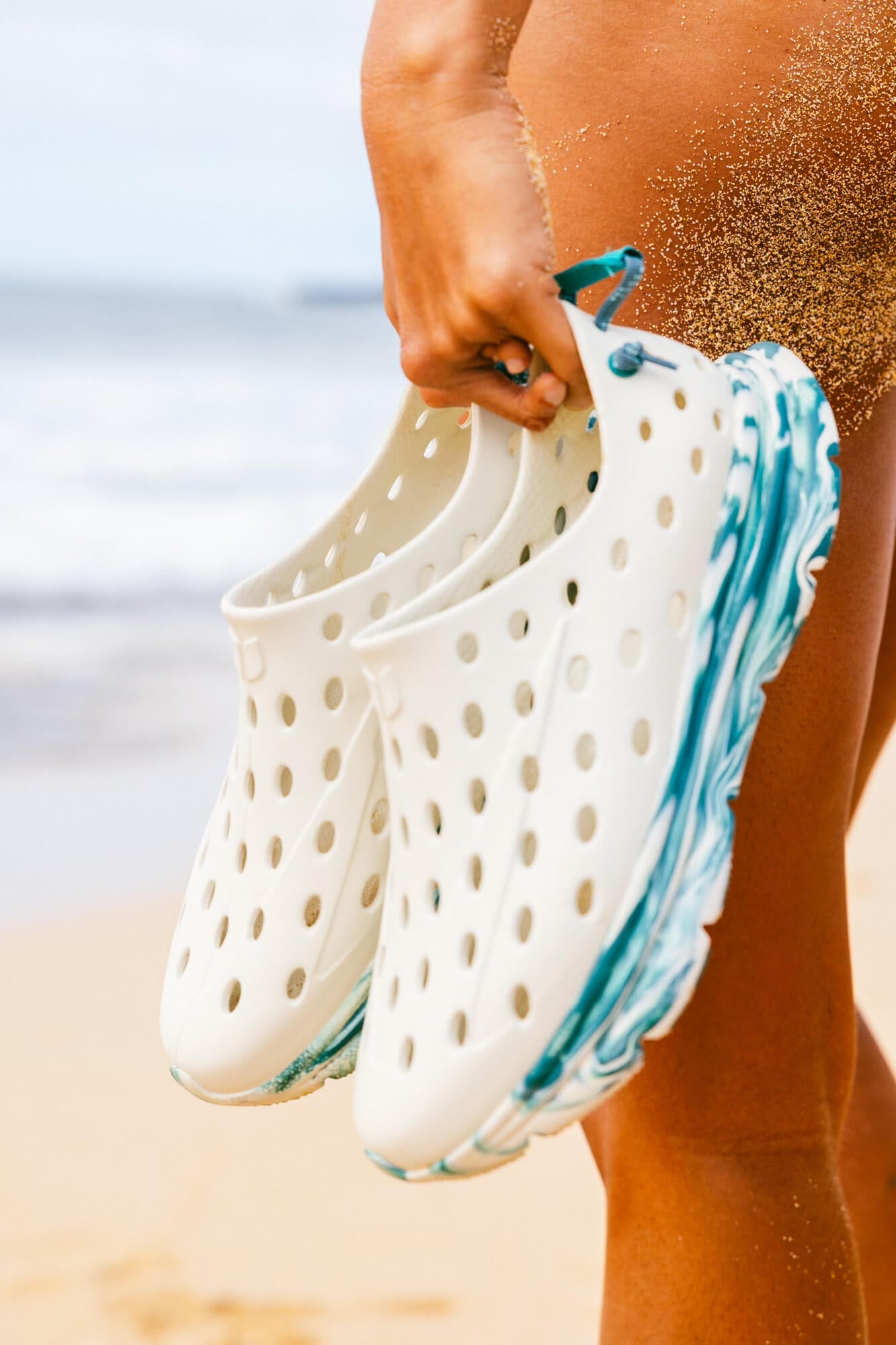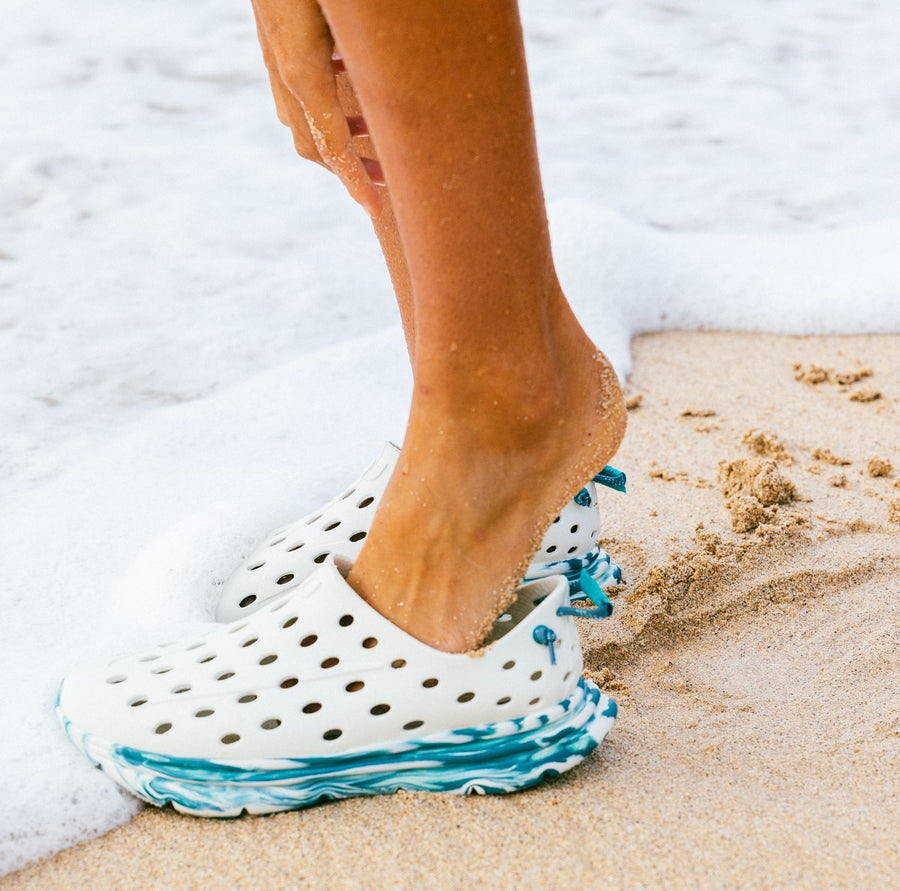What are non-slip shoes, and how do they work?
Safety at every step is paramount in today's bustling world, particularly in environments prone to slippery surfaces. Enter non-slip shoes, the unsung heroes of footwear engineered to keep you grounded and prevent slips when navigating treacherous terrain. But what exactly are non-slip shoes, and how do they prevent accidental falls?
Delve into the science behind these specialized shoes, exploring their innovative design features and materials that provide unparalleled traction, stability, and peace of mind when slippery predicaments come your way.
Whether you're a chef in a bustling kitchen rife with greasy surfaces, a healthcare professional navigating hospital floors, an outdoor enthusiast traversing rugged trails, or a pedestrian navigating icy sidewalks, understanding the intricacies of non-slip footwear is vital to preventing workplace injuries and staying safe and sure-footed in any environment.
5 features that define slip-resistant shoes
Non-slip shoes, also known as slip-resistant shoes or footwear, are specially designed to prevent slips. These specialized shoes have outsoles engineered to provide superior traction and grip on slippery surfaces. They are commonly used in restaurants, hospitals, factories, and construction sites, where floors may be wet, oily, or otherwise hazardous.
Non-slip shoes typically have outsoles made of rubber or other high-friction materials with tread patterns or grooves that increase surface area contact and prevent slipping. They are designed to reduce the risk of slips, trips, and falls, thus enhancing workplace safety and preventing accidents.
These are the five key features that define non-slip shoes:
1. Rubber or synthetic soles
Non-slip shoes are made from rubber, polyurethane, EVA (ethylene vinyl acetate), or synthetic tread material that provides better grip and traction than most shoes on slippery surfaces.
2. Specialized tread patterns
The soles of non-slip shoes have distinct tread patterns, often with small hexagons, circles, or other shapes that create deep grooves designed for channeling liquids away and preventing slips.
3. Thick, durable construction
Non-slip shoes have thicker, more sturdy soles that provide cushioning and support for long periods of standing or walking.
4. Water-resistant materials
The uppers of non-slip shoes are often made from water-resistant or waterproof materials like leather or synthetic fabrics to protect the foot in wet conditions.
5. Slip-resistant labeling
Shoes marketed as "non-slip," "slip-resistant," or "anti-slip" have been designed and tested for slip resistance on wet and oily surfaces.
What makes a slip-resistant shoe slip-resistant?
A shoe's design impacts how effective it will be on slick surfaces. Non-slip shoes work by using specialized materials and design features in their outsoles to enhance traction and shoe grip on slippery surfaces.
How non-slip shoes work
According to the Centers for Disease Control and Prevention, "Slips, trips, and falls are the second most common type of fatal work-related injuries and the third most common type of non-fatal work-related injuries in the United States."
A study published in the Scandinavian Journal of Work, Environment, and Health found that slip-resistant footwear effectively reduces slipping-related injuries in food service workers. Workers in districts where highly-rated, slip-resistant shoes were provided experienced a 67 percent reduction in slip injury claims.
This is how non-slip shoes work:
- Specialized traction patterns: Non-slip shoes have a distinct tread pattern on the soles, often with small hexagons, circles, triangles, or other shapes that create grooves. A tread groove channels liquids away from the sole, preventing the liquid from getting trapped and causing a slip.
- Rubber or synthetic soles: Anti-slip soles are made from rubber, polyurethane, EVA (ethylene vinyl acetate), or sometimes synthetic rubber-like materials. These materials provide better grip and traction on wet, oily, or slippery surfaces than regular shoes.
- Thick, durable construction: Non-slip shoes have thicker, sturdier soles that provide cushioning and support for long periods of standing or walking. The dense, durable construction helps maintain traction and prevent slips over extended wear.
- Angled or rounded sole design: Slip-resistant soles are often designed with angled or rounded edges to allow liquids to run off the surface rather than getting trapped underneath. This prevents liquid from causing slippage between the sole and the surface (whether a rough surface or a slick one).
6 types of non-slip shoes
Non-slip shoes come in various styles tailored for different environments and activities. Six common types are:
1. Work shoes
Slip-resistant work shoes are typically crafted with durability and safety in mind. They often feature reinforced toe caps and supportive midsoles to protect against workplace hazards. Non-slip work shoes come in various styles, including oxfords, loafers, and lace-up boots, and are suitable for different job roles and environments.
This type of safety footwear is designed to be comfortable during long hours of wear, often incorporating cushioned insoles and breathable materials to keep feet comfortable and dry during extended shifts for construction workers and others spending a lot of time on their feet.
2. Chef clogs
Chef clogs are specifically tailored to meet the demands of kitchen environments where spills, slick floors, and wet or oily surfaces are common occurrences. These shoes are typically made from synthetic materials or EVA foam, which are resistant to water and oil.
They often feature closed-back designs and adjustable straps for a secure fit, ensuring stability while maneuvering through crowded kitchens. Chef clogs are easy to clean, with smooth surfaces and removable insoles that can be washed or replaced.
3. Athletic sneakers
Non-slip athletic sneakers are engineered to provide traction and support for various physical activities. They feature specialized anti-slip outsoles with multidirectional treads or patterns designed to enhance grip on different surfaces, including asphalt, trails, and gym floors.
These sneakers prioritize performance and comfort, with features such as breathable mesh uppers, responsive cushioning, and supportive midsoles. They come in various styles and designs to cater to specific sports or training needs, ensuring that wearers can focus on their activities without worrying about slipping or sliding.
4. Server shoes
Server shoes are designed to withstand the demands of fast-paced restaurant environments while providing slip-resistant traction. They often feature low-profile designs with non-marking outsoles to prevent scuffing and reduce slips.
These shoes are lightweight and flexible for agility and ease of movement, allowing food service workers to navigate crowded dining areas and potentially oily kitchen floors confidently. They may also incorporate moisture-wicking linings and padded collars for additional foot protection during long shifts, preventing fall accidents and ankle sprains.
5. Safety boots
Safety boots featuring non-slippery shoe soles are essential for construction, manufacturing, and logistics workers. These boots are constructed with durable materials such as leather or synthetic textiles and reinforced with steel or composite toe caps for protection against impact and compression hazards.
This type of protective footwear features rugged outsole patterns with deep treads for maximum traction on uneven terrain and slippery surfaces. Safety boots prioritize stability and support, often incorporating ankle padding, arch support, and shock-absorbing midsoles to reduce fatigue and minimize the risk of musculoskeletal injuries caused by slip hazards.
6. Outdoor sandals
Non-slip outdoor sandals are designed for adventurers who enjoy hiking, trekking, or water activities in rugged environments. These sandals feature durable straps, adjustable closures for a secure fit, and molded footbeds for arch support and cushioning.
Outdoor sandals are constructed with quick-drying materials such as neoprene, nylon, or synthetic leather that are resistant to water and abrasion. They provide traction and grip on wet or slippery surfaces, with rugged outsoles featuring pronounced lug patterns or high-grade rubber compounds for superior traction on trails, rocks, riverbeds, and other slick terrain, helping to prevent a not-so-graceful tumble in the great outdoors.
A non-slip pair of sandals offers breathability and ventilation to keep feet cool and comfortable during warm-weather adventures, making them a versatile choice for outdoor enthusiasts.
Discover Kane Recovery Shoes!
Step into our Kane Revive Active Recovery Shoe, and you’ll never turn back. Our slip-resistant shoes give you the breathability you need and the comfort you deserve.
Kane's recovery shoes provide excellent support, comfort, and durability for those needing top-notch recuperative footwear. Featuring an adjustable hook-and-loop single-strap synthetic upper, plush TPR footbed, and durable injected EVA outsole, these kicks come with all the right features to assist you during your rehabilitation journey.
Aside from providing quality products, they are also committed to sustainability, having made plans to become a B Corp while dedicating 1% of their overall profits towards environmental charities.
When and how to wear Kane Revive
The best moment to wear most recovery shoes is directly after a strenuous activity such as running or exercising. This helps minimize inflammation and launch the healing process. To guarantee maximum comfort and effective recuperation, make sure that you are wearing your recovery footwear correctly by tying up laces securely for a snug fit.
Frequently asked questions
What classifies a shoe as non-slip?
A shoe's combination of rubber/synthetic soles, specialized treads, thick construction, and water-resistant materials classifies it as non-slip and suitable for wet, oily, or slippery environments.
What are examples of slip-resistant shoes?
Some examples of non-slip shoe styles include:
- Work boots: Designed for heavy-duty work environments, these boots often feature rugged outsoles with deep treads for excellent traction on slippery surfaces.
- Chef shoes: Specifically crafted for professional kitchens, chef shoes typically have slip-resistant outsoles to prevent accidents caused by spills and slippery floors.
- Hospital shoes: Healthcare professionals often wear shoes with non-slip soles to navigate hospitals safely, where floors are frequently cleaned and may become slippery.
- Server shoes: Waitstaff and restaurant workers often wear non-slip shoes to prevent accidents while navigating busy dining areas and potentially slick kitchen floors.
- Athletic sneakers: Some athletic shoes have non-slip outsoles, making them suitable for hiking, trail running, or outdoor sports where traction on varied terrain is essential.
- Casual slip-ons: Many casual slip-on shoe styles, such as loafers or moccasins, are available with non-slip soles, providing style and safety for everyday wear.
When should you wear non-slip shoes?
Wear non-slip shoes whenever you anticipate encountering slippery surfaces, such as wet floors, oily environments, or uneven terrain. They provide traction and stability, reducing the risk of slips, trips, and falls, making them ideal for workplaces, kitchens, outdoor activities, and any situation where safety is a concern.
What is the best slip-resistant footwear for outdoor activities?
For outdoor activities, consider these non-slip styles:
- Hiking boots: These boots typically feature rugged outsoles with deep lugs for excellent grip on uneven terrain. Look for boots with pronounced treads and durable materials for traction on rocks, dirt, and slippery surfaces.
- Trail running shoes: Designed for running on off-road trails, these shoes often have sticky rubber outsoles with multidirectional lugs or cleats to provide grip on various surfaces like mud, gravel, and wet rocks.
- Approach shoes: Ideal for technical hiking and climbing approaches, approach shoes combine the traction of hiking boots with the agility of climbing shoes. They feature sticky rubber soles for excellent grip on rocky terrain and scrambling sections.
- Water shoes: For activities like kayaking, rafting, or exploring wet environments, water shoes with non-slip soles are essential. These shoes typically have quick-drying materials and grippy outsoles for traction on wet surfaces.
- Trail sandals: Designed for warm-weather hiking and water activities, trail sandals feature durable outsoles with multidirectional lugs or grip patterns to provide traction on trails, rocks, and wet surfaces while allowing your feet to breathe.
- All-terrain sneakers: Some athletic sneakers are designed for all-terrain use, featuring durable outsoles and treads for traction on various surfaces. Look for sneakers with sturdy construction and grippy rubber outsoles for outdoor activities.
What are the most comfortable non-slip shoes?
The most comfortable non-slip shoes vary depending on individual preferences and needs. However, cushioned sneakers, supportive work shoes, ergonomic clogs, and flexible slip-ons are often an excellent place to start when purchasing shoes.
Their excellent cushioning, arch support, breathable materials, and ergonomic design provide all-day comfort while helping to prevent slips and falls.





















